Jun
30
2020
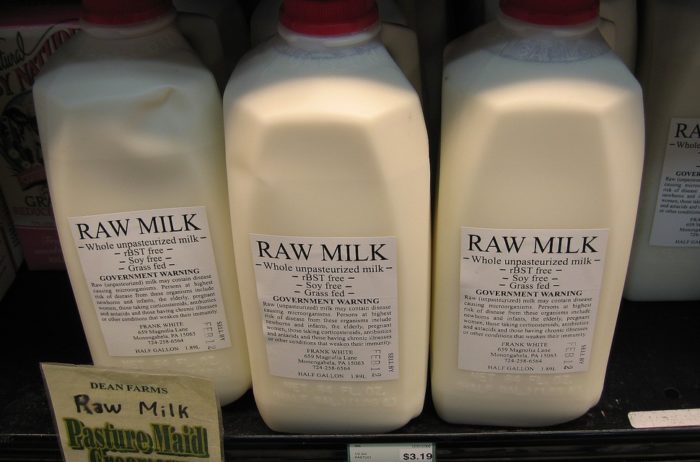 It often seems that for every modern advance that helps humanity live safer, more comfortable, and more productive lives there are those who claim that advance is a bane to be avoided, perhaps even the plot of a sinister conspiracy. One of the more perplexing examples is raw milk aficionados. These are people who claim, against all evidence, that raw milk is healthier. A new study adds to the pile of evidence that they are wrong.
It often seems that for every modern advance that helps humanity live safer, more comfortable, and more productive lives there are those who claim that advance is a bane to be avoided, perhaps even the plot of a sinister conspiracy. One of the more perplexing examples is raw milk aficionados. These are people who claim, against all evidence, that raw milk is healthier. A new study adds to the pile of evidence that they are wrong.
Most milk consumed in the US and industrialized nations is pasteurized and homogenized. Pasteurization is the process of flash heating raw milk in order to kill bacteria, making the milk safer and extending its shelf life. The process involves heating milk in stainless steel containers to 161° F for 15 seconds then rapidly cooling down to 39° F. Many European countries prefer ultra-pasteurized milk, which involves heating to 280-300 degrees F for 2-3 seconds. This produces so-called shelf stable milk that does not have to be refrigerated.
Pasteurization undeniably works as advertised. As Mark Crislip summarized over at SBM, the widespread use of pasteurization has reduced milk as a source of human bacterial infection outbreaks from 25% to 1%. Many studies have shown that consuming raw milk is a risk factor for bacterial infection. So why would raw milk proponents claim it is better? They believe that raw milk is more nutritious and tastes better, and contains healthy probiotics.
Continue Reading »
Jun
26
2020
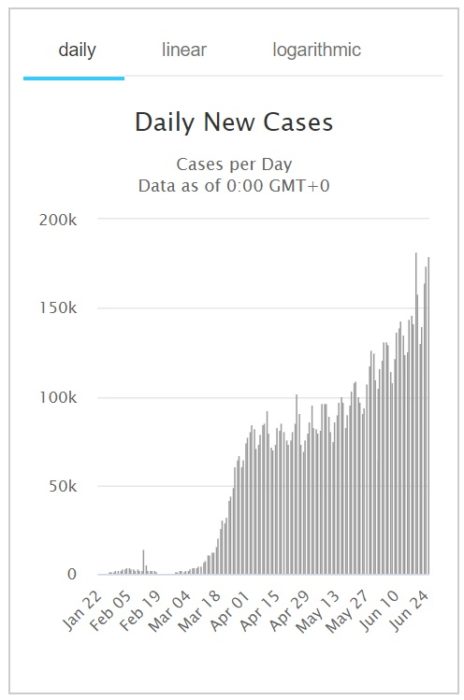 It’s always disappointing (not surprising, but disappointing) when a purely scientific question unnecessarily becomes a political or social one. Whether or not to wear a face mask during an historic pandemic should be purely a question of risk vs benefit – does it work, and is there any downside? The evidence is clear enough at this point that mask wearing helps reduce the spread of COVID-19. David Gorski recently reviewed the evidence, including a recent meta-analysis, and found:
It’s always disappointing (not surprising, but disappointing) when a purely scientific question unnecessarily becomes a political or social one. Whether or not to wear a face mask during an historic pandemic should be purely a question of risk vs benefit – does it work, and is there any downside? The evidence is clear enough at this point that mask wearing helps reduce the spread of COVID-19. David Gorski recently reviewed the evidence, including a recent meta-analysis, and found:
When it came to masks, an analysis of 29 unadjusted and 10 adjusted studies demonstrated that the use of masks was also associated with a large decrease in transmission, both for N95 masks and for disposable surgical masks or similar reusable 12- to 16-layer cotton masks.
Since that review there have been further studies, such as this one, showing that countries who adopted mask wearing early had fewer cases of illness. The benefit, therefore, seems clear. What’s the downside? Pretty minimal. Sure, it may be a pain and a bit uncomfortable, but this is a minor nuisance at worst. People who are hard of hearing and rely on lip reading probably suffer the biggest downside. There are masks with transparent sections over the mouth to facilitate lip reading, however, for those who need to deal with the hearing impaired.
So wear a mask if you are sick, around other people who are sick, or just in public. In some countries it is considered hygiene etiquette, as it should be.
As a side note, there is some confusion because early on the WHO recommended not to wear a mask in public unless you or others were sick. This was not because the evidence did not support it, however, but because there was a shortage of PPE and people were hording. The idea was to make sure that essential workers had enough masks. This is no longer an issue, and the WHO has revised their recommendations, which are now in line with the CDC – wear a mask, even just to go in public.
Continue Reading »
Jun
25
2020
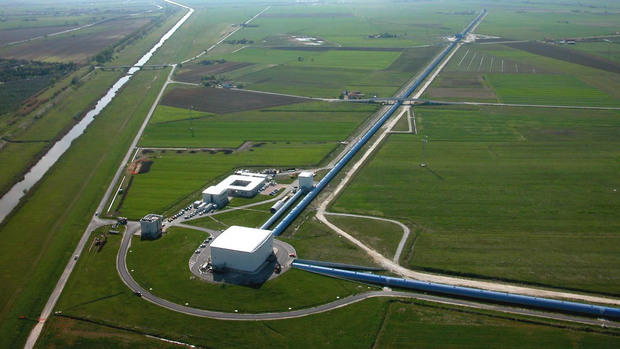 Trust me, this is cool. Astronomers have discovered a stellar remnant with 2.6 solar masses, which is within a range of mass called the “mass gap” because of the almost complete lack of such objects in that range. This is both an astronomy mystery (how do such objects form) and a physics mystery (what forces dominate at this size). Any new data points give us clues to solve the mystery of the mass gap, so this is exciting news.
Trust me, this is cool. Astronomers have discovered a stellar remnant with 2.6 solar masses, which is within a range of mass called the “mass gap” because of the almost complete lack of such objects in that range. This is both an astronomy mystery (how do such objects form) and a physics mystery (what forces dominate at this size). Any new data points give us clues to solve the mystery of the mass gap, so this is exciting news.
Even still, yet again I find the headlines and even the popular reporting hyping the find. The BBC headline reads, “‘Black neutron star’ discovery changes astronomy.” No, this is not going to “change astronomy,” unless you count every incremental addition of new information as changing the entire field. Also, calling it a “black neutron star”, while a possibility, is assuming only one possible conclusion. But let’s get into the interesting details.
For quick background, when stars die they leave behind a stellar remnant. When stars run out of fuel they are able to burn (which is partly determined by their mass) they no longer produce the outward pressure of fusion and so gravity takes over and they collapse. If they are large enough (8-15 solar masses) the core collapse results in a supernova. Either way, what’s left behind is a stellar remnant. Small remnants become a white dwarf, a glowing hot ember but without fusion. If the remnant is at least 1.4 solar masses the force of gravity will overcome the repulsive force among the positive proton and negative electrons and the white dwarf will collapse down to a neutron star – in simplistic terms, the electrons and protons will merge into neutrons, so the entire thing is made of neutrons.
Continue Reading »
Jun
22
2020
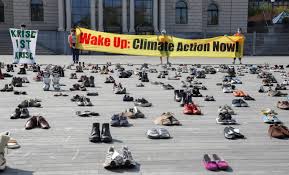 I don’t like the headline of this article: World has six months to avert climate crisis, says energy expert. It’s accurate – a climate scientist does indeed say that, but it is focusing on an extreme end of expert opinion, and is misleading without context. I know, headlines are attention grabbers and often not written by the author of the article, I just find it all annoying.
I don’t like the headline of this article: World has six months to avert climate crisis, says energy expert. It’s accurate – a climate scientist does indeed say that, but it is focusing on an extreme end of expert opinion, and is misleading without context. I know, headlines are attention grabbers and often not written by the author of the article, I just find it all annoying.
In any case – what is this guy, Fatih Birol, executive director of the International Energy Agency, talking about? His point, which is an interesting one, is that the pandemic provides an opportunity to accelerate reduction in carbon emissions. This is because the world is set to spend “$9tn (£7.2tn) globally” on the economic recovery, much of it focused on job preservation and creation. What if we spend some of that money on job creation in the green energy sector? That is where the “six months” comes from. It is not based on science, on when we spend our carbon budget or when getting to a climate tipping point becomes inevitable. Rather, it is the time frame of determining how those trillions of economic recovery dollars will be spent. Birol argues this is our last realistic chance, from this political perspective, to make the dramatic changes to our economic and energy infrastructure that averting the worst of climate change requires.
He does have a point, although I would argue that it is never theoretically too late. At any point the world could muster the political will to deal properly with climate change. Sometimes we do reach inflection points in public opinion. But the pessimistic view is that this is unlikely to happen with climate change. The political will probably will not manifest until after it is too late.
There are several reasons for my pessimism. One is that the effects of climate change will not generally be felt until years after the carbon release that causes it. We are already, arguably, feeling the effects of climate change, but not in a way that is overwhelmingly undeniable, at least to enough people to make a difference. Further, there are vested interests in the status who that spend a lot of money on disinformation and political lobbying. They don’t have to “win” the argument in the end, only cause enough fear and doubt to delay action.
Continue Reading »
Jun
19
2020
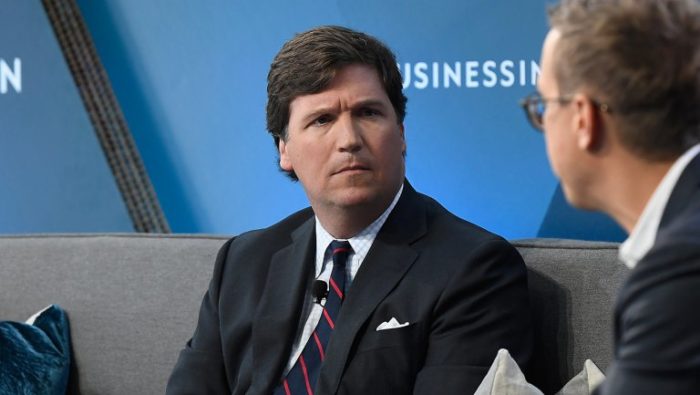 The line between news and commentary has arguably become more blurred in recent decades. This has implications for libel law, which also reflects the shifting media landscape. A recent lawsuit involving Tucker Carlson illustrates the problem.
The line between news and commentary has arguably become more blurred in recent decades. This has implications for libel law, which also reflects the shifting media landscape. A recent lawsuit involving Tucker Carlson illustrates the problem.
Carlson is being sued for defamation by Karen McDougal for a segment in which she claims Carlson accused her of extortion. She is one of two women that we know of who were paid off to remain silent about affairs with Trump. Here is the money quote from Carlson:
“Two women approached Donald Trump and threatened to ruin his career and humiliate his family if he doesn’t give them money. Now that sounds like a classic case of extortion.”
For background, libel cases are hard to prove in the US. You need to demonstrate that statements were made in public that are claims to facts, that are factually wrong, where the person making the statement knew they were wrong or had a disregard for the truth, that there was malice of intent, and that actual harm resulted. For some statements you don’t have to prove harm, they are “libel per se,” such as accusing someone of pedophilia. The harm is taken for granted. If the target of the alleged defamation is a public figure, then the burden of proof is even higher.
At issue here are whether Carlson’s statements were presented as facts or opinion. Opinion is completely protected free speech, and cannot be defamatory legally. The first part of Carlson’s statement above is stated as simple fact. The second part (“that sounds like”) seems to be his analysis or opinion. Forgetting the other aspects of the defamation standard for now, this question seems to be the crux of the case. Was Carlson making a factual claim he knew to be untrue, or without concern for whether or not it was true? The defamation standard requires more than just being wrong.
Continue Reading »
Jun
18
2020
 The headlines (taken from the press release) read: “New light shed on intelligent life existing across the galaxy.” But here’s the thing – I don’t think the referenced study does that at all. So what are they talking about?
The headlines (taken from the press release) read: “New light shed on intelligent life existing across the galaxy.” But here’s the thing – I don’t think the referenced study does that at all. So what are they talking about?
The study uses their own version of the Drake Equation, which is a way of calculating how many spacefaring civilizations there are likely to be in the universe. The equation itself is correct – you consider the number of stars, the subset of those with planets in the habitable zone, the number of those who develop life, then intelligent life, then technology and multiply all that by the average lifespan of such civilizations. The equation works, as far as it goes, it’s just not terribly useful. The reason is that we don’t know the values of any of the variables. We can guess some of them, those dealing with stuff we can see, like how many planets are out there, but we essentially have no idea about any of the variables dealing with life.
The reason we have no idea is basic scientific logic – because we have one data point, Earth. Remember when we encountered the first interstellar object? That one encounter left us with no practical way to calculate how common such objects were. It could have been a one-off extremely unlikely event. But as soon as we encountered a second interstellar object, we had a rough idea how common they were. We had something to calculate.
You just can’t extrapolate from one data point. We may be the only life in the entire universe, or the universe might be teeming with life – both ends of the spectrum are consistent with our one known data point. We have no idea how common life is, how common intelligent life is, or technological civilizations, or how long they survive on average. None – really. So any numbers we put in are just wild guesses, and the errors on those wild guesses multiply.
Continue Reading »
Jun
16
2020
 During the current national attention being paid to police practice and inequities of police killing of African Americans it is important to put the data that we have into as much context as possible, in order to understand the phenomenon and make sure that our efforts to improve the situation are properly targeted. Unfortunately, the data are complex, which makes it easy to see what one wants to see. I will try to break down the research as objectively as I can, although it is likely that perception of bias will also depend on perspective.
During the current national attention being paid to police practice and inequities of police killing of African Americans it is important to put the data that we have into as much context as possible, in order to understand the phenomenon and make sure that our efforts to improve the situation are properly targeted. Unfortunately, the data are complex, which makes it easy to see what one wants to see. I will try to break down the research as objectively as I can, although it is likely that perception of bias will also depend on perspective.
We can start with the most basic numbers:
Risk is highest for black men, who (at current levels of risk) face about a 1 in 1,000 chance of being killed by police over the life course. The average lifetime odds of being killed by police are about 1 in 2,000 for men and about 1 in 33,000 for women. Risk peaks between the ages of 20 y and 35 y for all groups. For young men of color, police use of force is among the leading causes of death.
This same data, from an August 2019 study, also shows that the overall risk of death at the hands of the police is about 2.5 times greater for black Americans than white Americans. This is an often cited figure, and it is salient, but there are additional layers here. Let’s break down the police use of force into non-lethal force, lethal force against armed citizens, and lethal force against unarmed citizens. Some studies focus on “shootings” rather than all uses of lethal force, mostly because that is how databases are often set up, but that can also miss important cases.
There is strong evidence that police use of non-lethal force is greater against black individuals than white. This holds up across a broad range of activities, such as drawing a weapon, using a baton, handcuffing, and using a taser. This difference is not explained by factors other than race. (The study authors controlled for other causes, and race emerged as an independent variable predicting use of force.) This is where police education is likely to be most effective, because it does seem to be a factor of police behavior.
Continue Reading »
Jun
15
2020
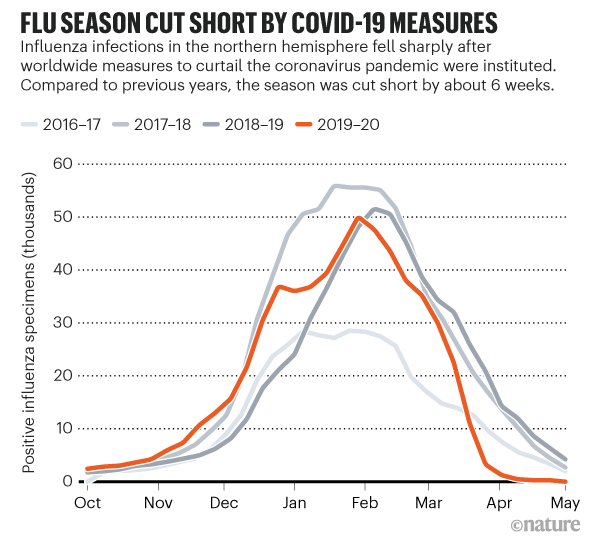 There is pretty clear evidence now that the lockdown worked in “flattening the curve” and reducing cases, hospitalizations, and deaths from COVID-19. By one estimate the lockdown has already prevented about 60 million cases in the US alone, and about 250,000 additional deaths, perhaps more. This doesn’t even take into consideration what would have happened if the pandemic was allowed to overwhelm hospital systems around the country. In the Northeast, which was hit early and hard, hospital systems were overwhelmed in that they had to reconfigure their resources, and compromise on protocols in order to meet the demand. In some NY hospitals they had two patients on one ventilator. Imagine this, but far worse, and more widespread. How many deaths not directly related to COVID-19 would have resulted from this strain on the system?
There is pretty clear evidence now that the lockdown worked in “flattening the curve” and reducing cases, hospitalizations, and deaths from COVID-19. By one estimate the lockdown has already prevented about 60 million cases in the US alone, and about 250,000 additional deaths, perhaps more. This doesn’t even take into consideration what would have happened if the pandemic was allowed to overwhelm hospital systems around the country. In the Northeast, which was hit early and hard, hospital systems were overwhelmed in that they had to reconfigure their resources, and compromise on protocols in order to meet the demand. In some NY hospitals they had two patients on one ventilator. Imagine this, but far worse, and more widespread. How many deaths not directly related to COVID-19 would have resulted from this strain on the system?
So I think we can take fair comfort in the fact that the lockdown, as painful as it is, has at least worked as intended. Many people have raised the question – did the lockdown work also on the flu? If so, why don’t we do some version of the lockdown during the height of flu season? We now have data on the effect of the lockdown on this year’s flu season in the northern hemisphere – it stopped the flu season about 5 weeks earlier than is typical. It’s possible some of this decrease in numbers is due to fewer people seeking treatment, but it’s likely that it is mostly due to reduced spreading of the flu virus.
This year in the US the flu season was toward the higher end in terms of cases and deaths – not out of the range of typical flu seasons, but at the bad end of the spectrum. In the US there were between 39 and 56 million cases of flu this year, with 24-62 thousand deaths. The upper limit of flu season deaths is around 65 thousand. The reason for the wide estimate range is because most people don’t get tested in order to confirm that their flu-like illness is indeed the flu. So confirmed cases are a small percentage of total cases, which are estimated by clinical presentation. Globally the estimated number of flu deaths each year is 290,000–650,000. Right now the global number of deaths attributed to COVID-19 is 436,000, but the number of new cases is still on the upswing.
Before you fall prey to the “COVID-19 is just a bad flu season” fallacy, keep in mind that the pandemic is not over yet. And, as stated, this is with lockdown. But, what does this say about how we handle typical flu seasons, and how we will likely handle COVID-19 in the future? Here are some thoughts.
Continue Reading »
Jun
12
2020
 Pangolin’s are adorable and weird animals. They are mammals, with eight (although some references say seven) species in their own order, the Pholidota (all eight species are also in the same family and genus). They have scales, no teeth, and a long tongue, and are native to Africa and Asia. They are also endangered for a very specific reason – their scales are valued as medicine in Traditional Chinese Medicine. They are endangered because of culturally and politically sanctioned pseudoscience.
Pangolin’s are adorable and weird animals. They are mammals, with eight (although some references say seven) species in their own order, the Pholidota (all eight species are also in the same family and genus). They have scales, no teeth, and a long tongue, and are native to Africa and Asia. They are also endangered for a very specific reason – their scales are valued as medicine in Traditional Chinese Medicine. They are endangered because of culturally and politically sanctioned pseudoscience.
This is why it has come as welcome news that China has finally removed pangolin scales from the list of official TCM treatments. They have also upgraded pangolins to the highest level of protection. I applaud this decision, which may be a “game changer” in terms of protecting pangolins, but I do have to point out that China is just mitigating a problem entirely of its own creation. It’s like announcing that you are going to stop beating your wife. Congratulations.
What remains to be seen is how strictly they are going to enforce their new protections. Striking pangolins from the list of official TCM products will not magically erase centuries of culture, or a very lucrative black market – just as banning ivory did not instantly disappear the ivory trade and save the elephant. Further, China needs to do the same thing for the entire list of TCM treatments based upon animals parts. No tiger bones, bear bile, or rhino horn.
Continue Reading »
Jun
11
2020

It’s hard to keep up with all the latest science and technology, even for an enthusiast. Entire new fields are emerging, and it can be challenging for the non-expert to wrap their head around all the new concepts. Here is my attempt to quickly tackle a relatively new idea in physics – twistronics.
The term refers to tuning the properties of 2-dimensional materials by stacking them and rotating the layers with respect to each other. This is a lot harder than it sounds – graphene (2d carbon in a hexagonal configuration, like chicken wire) for example likes to align itself and will resist such twisting. Further, it is difficult to make pure 2d sheets without errors or contamination. But some theoretical physicists were predicting that interesting things might happen at certain “magic” angles of rotation, such a 1.1 degrees. It was then left to experimental physicists to make it happen.
This has all been happening very quickly, over the last few years. It was in 2018, in fact, that physicist Pablo Jarillo-Herrero published the first study showing the properties of graphene “devices” with a twist angle of 1.1 degrees. What he found at this magic angle was something, he now reports, that he dared not predict or even hope for, one of the holy grails of material science – superconductivity.
A superconducting material is essentially one that allows for the flow of electrons without any resistance, and therefore no loss of energy as heat. Superconductivity would transform our electrified world and allow for the creation of much more powerful and efficient electronics. Physicists have created a number of superconducting materials, but at low temperature. The trick is to make so-called high-temperature superconducting material. This first became a popular sensation in the 1980s, with the discovery of superconducting ceramics. At the time, if you believed they hype, it seemed like a matter of just years before we would have room-temperature superconductors, with devices sitting on every desktop. Reality proved much more difficult.
Continue Reading »
 It often seems that for every modern advance that helps humanity live safer, more comfortable, and more productive lives there are those who claim that advance is a bane to be avoided, perhaps even the plot of a sinister conspiracy. One of the more perplexing examples is raw milk aficionados. These are people who claim, against all evidence, that raw milk is healthier. A new study adds to the pile of evidence that they are wrong.
It often seems that for every modern advance that helps humanity live safer, more comfortable, and more productive lives there are those who claim that advance is a bane to be avoided, perhaps even the plot of a sinister conspiracy. One of the more perplexing examples is raw milk aficionados. These are people who claim, against all evidence, that raw milk is healthier. A new study adds to the pile of evidence that they are wrong.
 It’s always disappointing (not surprising, but disappointing) when a purely scientific question unnecessarily becomes a political or social one. Whether or not to wear a face mask during an historic pandemic should be purely a question of risk vs benefit – does it work, and is there any downside? The evidence is clear enough at this point that mask wearing helps reduce the spread of COVID-19. David Gorski
It’s always disappointing (not surprising, but disappointing) when a purely scientific question unnecessarily becomes a political or social one. Whether or not to wear a face mask during an historic pandemic should be purely a question of risk vs benefit – does it work, and is there any downside? The evidence is clear enough at this point that mask wearing helps reduce the spread of COVID-19. David Gorski Trust me, this is cool. Astronomers have discovered a stellar remnant with 2.6 solar masses, which is within a range of mass called the “mass gap” because of the almost complete lack of such objects in that range. This is both an astronomy mystery (how do such objects form) and a physics mystery (what forces dominate at this size). Any new data points give us clues to solve the mystery of the mass gap, so this is exciting news.
Trust me, this is cool. Astronomers have discovered a stellar remnant with 2.6 solar masses, which is within a range of mass called the “mass gap” because of the almost complete lack of such objects in that range. This is both an astronomy mystery (how do such objects form) and a physics mystery (what forces dominate at this size). Any new data points give us clues to solve the mystery of the mass gap, so this is exciting news. I don’t like the headline of this article:
I don’t like the headline of this article:  The line between news and commentary has arguably become more blurred in recent decades. This has implications for libel law, which also reflects the shifting media landscape.
The line between news and commentary has arguably become more blurred in recent decades. This has implications for libel law, which also reflects the shifting media landscape.  The headlines (taken from the press release) read: “
The headlines (taken from the press release) read: “ During the current national attention being paid to police practice and inequities of police killing of African Americans it is important to put the data that we have into as much context as possible, in order to understand the phenomenon and make sure that our efforts to improve the situation are properly targeted. Unfortunately, the data are complex, which makes it easy to see what one wants to see. I will try to break down the research as objectively as I can, although it is likely that perception of bias will also depend on perspective.
During the current national attention being paid to police practice and inequities of police killing of African Americans it is important to put the data that we have into as much context as possible, in order to understand the phenomenon and make sure that our efforts to improve the situation are properly targeted. Unfortunately, the data are complex, which makes it easy to see what one wants to see. I will try to break down the research as objectively as I can, although it is likely that perception of bias will also depend on perspective. There is
There is  Pangolin’s are adorable and weird animals.
Pangolin’s are adorable and weird animals.





